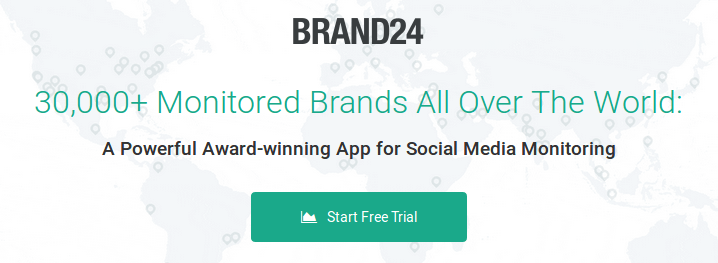Interview: Neal Schaffer on Maximizing Your Social Business
The founder and editor-in-chief of Maximize Social Business, Neal Schaffer is a leader in helping businesses and professionals strategically maximize their use of social media. Neal is the author of three social media books, including the recently published definitive social media strategy book Maximize Your Social. Forbes lists him as a Top 35 Social Media Power Influencer and AdAge lists his blog Maximize Social Business (formerly known as Windmill Networking) as a top 100 global marketing blog. Neal provides social media strategy consulting and coaching. Named Top 100 Marketing Influencer 2017, according to Brand24.
We asked Neal a few questions about how he maximizes his social business.
How can you calculate the effects of your social media strategy?
I wrote a book called Maximize Your Social back in 2013 and it’s become the definitive book on how to create, implement, and measure a social media strategy. And really, when you get down to it, social media strategies are going to be different for every company. The reason why is that social media, like the Internet, can be used for so many different things.
Every company is going to have different objectives. You’d be surprised. I’ve worked with companies where the objective wasn’t to grow sales, but it was to become a thought leader in the industry. It was to become respected in the industry, like to increase their goodwill with the public. I worked with a public utility that was interested in proactively managing future crises. I worked with a customer support organization, and what have you.
So, the only way to effectively measure the ROI in social media strategies is to begin with an objective that is measurable. The problem is, not every objective is measurable. But you need to have something measurable, because without it, how are you going to define or figure out if you’re doing well or not? How do you improve or not? And if you’re hiring an agency for social media, how will you know how to judge them?
So when I work with my clients, (I have my own social media agency) we set-up what those KPIs, or Key Performance Indicators, are going to be, that are going to show us whether we have positive or negative ROI. In other words, for the money we spend, the money we invest, and the projected outcome – is it better than we thought it’d be? Or worse than we thought it’d be? That would be, or translate into, positive or negative ROI.
Sorry I can’t be more specific, but it does come down to a one-by-one approach, depending on your business.
What tools are you using for that?
Well, the best tool ever for this is something called… <drum roll>… the brain. Because it requires analog thinking, right? You can’t do all this digitally. You know, social media dashboards will spew out all these analytics, metrics, and numbers but it has no meaning if it does not help you determine whether or not you have positive social media ROI.
And, to be honest with you, most of those metrics really are irrelevant. They help you with, what I would call, secondary metrics. So, how effective is your social media? If you’re going to post 3 times a day on Facebook, how can you get more impressions? How do we get more shares? It’ll help you analyze that and maybe figure out a better day, a better time, better content. But in terms of the ROI of affecting your business’ bottom line, I don’t think that tool exists, in all honesty.
Tools are getting better at it, but I don’t think we’re there yet, unless you have very, very specific KPIs, like ‘I want to convert more business from social’. That’s fairly easy to measure inside Google Analytics, correct? OK, so yeah, I’d say that if you are basing your social media program or your social media strategy on conversions and it’s an extension of your web analytics, then your web analytics platform, like Google Analytics, is gonna help you best measure that ROI. So that’s the tool you can use.
Being present and visible on social media is crucial for brands today, because that’s where their clients are, and more active than ever. What are the best practices for engaging customers through social?
Well I think, first of all, being there. So, everyone’s on Instagram, (but) there are so many companies that still aren’t on Instagram. There’s an active user base on Pinterest. Is your company on Pinterest? So, the first step is actually being there.
The second step is, well, I’d like to say that social media represents the convergence of information and communication. So, I think it’s less about ‘hey, fans, what’s going on today?’ and more about giving fans information that can help them. Becoming a resource. And obviously if you’re a B2B brand, it becomes more important. But I think even consumer-facing brands can do that, and I think you engage through content which leads to conversation which leads to further engagement.
Can you share any examples based on your brand or from others who’ve managed to engage customers on social in a spectacular way?
Boy, spectacular is a hard adjective to quantify. And, you know, when I work with my clients, engagement is not the social media strategy. Engagement’s necessary to improve the effectiveness of social media so that on algorithmic-strong networks like Facebook, our content will appear to more people.
For the brands I’ve always worked with, it really came down to content, and finding the content that leads to engagement, and posting more of it. You know, in essence. And actually responding when people respond to us.
Obviously, we’ve seen Oreo in the Super Bowl commercial, I think this was last year or it could’ve been 2 years ago by now, but you know, responding to public events that everybody’s tuned into in a spectacular way. And we’ve seen examples of consumer-facing brands doing this, especially on Twitter. So, sorry I don’t have anything more specific for you there.
Is there any tested idea that makes content viral that works in most cases?
There is, actually. I was about to say there isn’t, but there is. It’s called paid social.
I’ve seen people speak about viral YouTube videos. Well, there was some point at the beginning of making it viral that they actually paid money so that they got a minimum number of views on YouTube, or what have you. So, I believe that anything that goes viral these days, because there’s so much noise and it’s so hard to be heard, there’s always a paid component to it that helps accelerate it becoming viral.
Can something purely organic go viral? I suppose so, but I think that’s less and less possible today and, like I said, I think if we look back at the viral examples in the past, I’d say for a majority of them, perhaps an overwhelming majority of them, there was a paid component to them.
Related articles
Top Reads
Brand Monitoring: Tools & Guide for 2026
Brand Awareness Strategy [The Ultimate Guide for 2026]
The Best AI Hashtag Tracker and Other Hashtag Tracking Tools [2026]
Social Media Reach: How to Measure & Improve It in 2026?
X (Twitter) Analytics Tools: The 10 Best to Try in 2026
Sentiment Analysis: What is it & Why do You Need it in 2026?
Share of Voice: Definition, Calculation, Tools [2026 Guide]
Brand Reputation Management: 6 Expert Tips for 2026
A Complete Guide to AI Social Media Analysis [2025]
How to See How Many Times a Hashtag Was Used on X (Twitter)
Start Social Listening!
Get the Brand24 trial and start social listening like a PRO.



